We have all heard that getting kids to read is dependent on introducing them to the right book. Students become striving readers or reluctant readers for many reasons, but luckily for them there are thousands of books for nonreaders designed to help increase ability and interest in reading. With more of these books available almost daily, it can be daunting to find that “just right” title. Here are four new books that will gross-out, fascinate, educate and inform even the most avid nonreaders.
Guys Read: Other Worlds
Edited by Jon Scieszka
Grades 3-7
Lexile 740L
Guys Read: Other Worlds is packed full of alien invaders, talking cats and voyages to distant planets. This collection of short science fiction and fantasy stories introduces readers to 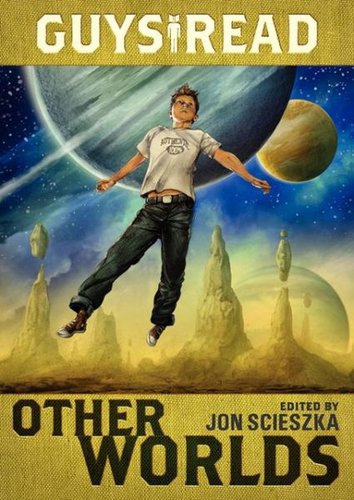 numerous authors and tropes of the genre. Rick Riordan fans will devour “Percy Jackson and the Singer of Apollo,” a new adventure with Percy and Grover. Tom Angleberger’s “Rise of the RoboShoes” is very short, very silly and heavily illustrated. Not all the stories are as lighthearted as these; “The Dirt on Our Shoes” by Neal Shusterman deals with bullying on a voyage to colonize a distant planet.
numerous authors and tropes of the genre. Rick Riordan fans will devour “Percy Jackson and the Singer of Apollo,” a new adventure with Percy and Grover. Tom Angleberger’s “Rise of the RoboShoes” is very short, very silly and heavily illustrated. Not all the stories are as lighthearted as these; “The Dirt on Our Shoes” by Neal Shusterman deals with bullying on a voyage to colonize a distant planet.
A boy in Kenneth Oppel’s “The Klack Bros. Museum” must decide if alleviating his father’s writing block is worth keeping a boy’s soul trapped as a ghost. In the editor’s note at the beginning, Jon Scieszka pays homage to the author that made him fall in love with science fiction: Ray Bradbury. The last short story, which is actually quite long, is written by this literary giant. From lighthearted and silly to serious and thought provoking, there is something every reader can appreciate in this collection.
Classroom Connections:
1. Read aloud “Rise of the RoboShoes” by Tom Angleberger. Have students write their own story of a technology we depend on gaining sentience. Will the new techno-beings still be willing to serve, or will they rise up and rebel against humanity.
2. “The Scout” by D. J. MacHale and “The Dirt on Our Shoes” by Neal Shusterman both have surprises near the end that bring new meaning to the rest of the story. After reading either or both of these, discuss why the authors chose to withhold vital information until the end. How does this writing technique affect the readers’ perceptions?
Eww! What’s On My Shoe?
By Nancy Krulik
Grades 2-4
George Brown really does try to behave, but try as he might he is only ever one Super Burp away from trouble. This illustrated chapter book series is great for readers who like a bit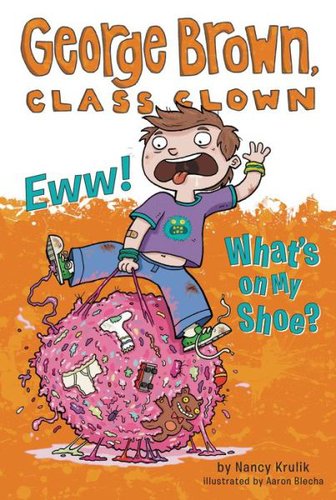 of grossness in their literature. George, who readers may remember from the Katie Kazoo series, has moved to a new town and is trying to turn over a new leaf. Unfortunately, he becomes cursed with the “Super Burp” which comes at unexpected times, taking him over and forcing him to cause mischief.
of grossness in their literature. George, who readers may remember from the Katie Kazoo series, has moved to a new town and is trying to turn over a new leaf. Unfortunately, he becomes cursed with the “Super Burp” which comes at unexpected times, taking him over and forcing him to cause mischief.
In Eww! What’s On My Shoe?, George is trying to help his best friend Alex break the world record for largest ball of ABC (Already Been Chewed) gum. When the man from Schminess Book of World Records comes to officially record the size of the gumball, a Super Burp almost makes George ruin everything! Underneath the layers of gross (of which there are several) George learns a lesson about friendship. He starts out very jealous of the attention Alex is getting but eventually decides to be supportive and happy for the achievement of his buddy.
Classroom Connections:
1. George and Alex are very excited about breaking a world record. The official from Schminess even invites George to his office to test his burp on a Sound Pressure Level (SPL) meter. Students interested in world records can research how records are determined and the measurement tools used.
2. Several Sound Pressure Level (SPL) apps are available for tablets and smartphones. Students can rank their burps (or other noises). Who holds the school record for loudest burp?
Boys of Steel: The Creators of Superman
By Marc Tyler Nobleman
Grades 5-8
Lexile 760L
Most students have grown up with superhero stories, but many may not know anything about the creators of these icons. In Boys of Steel, Nobleman introduces readers to two 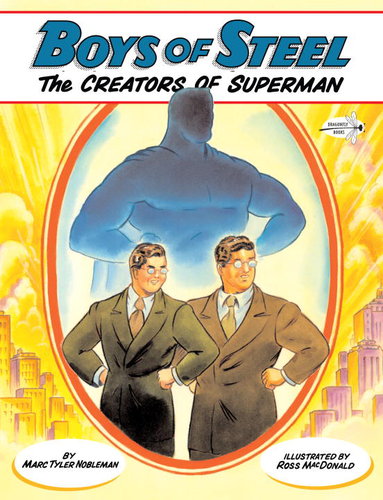 awkward teens from Depression Era Ohio: Jerry Siegel and Joe Shuster. Jerry, missing his father after a robbery left him dead, escapes reality by reading about the daring adventures of heroes like Tarzan, Buck Rogers and Flash Gordon. He also writes his own stories, full of heroes and adventure. Joe Shuster, Jerry’s friend and neighbor would illustrate these stories. Their dream was to create a hero so unlike others out there a publisher would have to take notice.
awkward teens from Depression Era Ohio: Jerry Siegel and Joe Shuster. Jerry, missing his father after a robbery left him dead, escapes reality by reading about the daring adventures of heroes like Tarzan, Buck Rogers and Flash Gordon. He also writes his own stories, full of heroes and adventure. Joe Shuster, Jerry’s friend and neighbor would illustrate these stories. Their dream was to create a hero so unlike others out there a publisher would have to take notice.
One night Jerry stays up all night writing, fueled by an idea of hero stronger and faster than any before. One that instead of being a human in a strange land, was a stranger in a familiar land. A hero who, when he wasn’t saving people, was shy and awkward, much like Joe and Jerry. The next morning he shared his ideas with Jerry, who spent the entire day capturing the new hero on paper. For over three years the friends were repeatedly turned down by editors, until one finally said yes. Because of their perseverance, the legacy of Superman continues to this day.
Classroom Connections:
1. Joe and Jerry created the hero they needed, a hero who could solve any crime, stop any adversary and come out unhurt. America during the Great Depression and World War II needed this kind of hero, too. Have students brainstorm qualities that Superman might have if he were created today. Students can then write and draw about a character who has these traits.
2. Superman was published because Action Comics was launching a brand new product called a comic book. Have students brainstorm new ways of telling stories with contemporary and future technologies. How will these kinds of stories differ from ones told in older mediums?
Seymour Simon’s Extreme Oceans
By Seymour Simon
Grades 4-7
Lexile 1170L
From undersea volcanoes to deadly tsunamis, Seymour Simon takes readers on a tour of the most extreme parts of the ocean. Stunning photographs of ocean life will fascinate 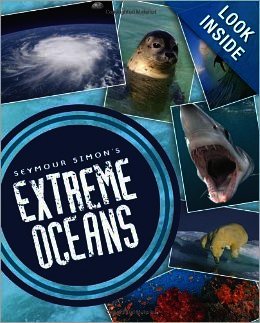 readers as they learn about the largest part of our planet. While 1170L is on the higher end of the Lexile range, the lower page count and helpful text features make this book accessible. Simon also does a great job of defining science terms within the text and relating overwhelming concepts in ways students can understand.
readers as they learn about the largest part of our planet. While 1170L is on the higher end of the Lexile range, the lower page count and helpful text features make this book accessible. Simon also does a great job of defining science terms within the text and relating overwhelming concepts in ways students can understand.
It is hard to image the pressure at deep sea levels: 16,000 pounds per square inch. To help students understand this measurement, he compares it to parking a heavy truck on a postage stamp. Animal lovers will be fascinated by the gigantic blue whale, the largest living creature on the planet, surviving by eating krill, which are some of the smallest. Perhaps some future scientists will be inspired to study marine biology to find some of the millions of ocean creatures current scientists believe have yet to be discovered.
Classroom Connections:
1. This title focuses on a variety of extremes found in the world’s oceans. Have students choose one area, such as Dangerous Sea Animals, and research further into this topic. What other animals are good to be wary of besides crocodiles, jellyfish and sharks?
2. Use this book as a mentor text for how to write exciting nonfiction. Students can look for extremes in the world that appeal to their specific interests. They can choose a habitat, country, city or even planet looking for the most exciting facts and figures to include in their own work.
What books for nonreaders are favorites in your classroom?


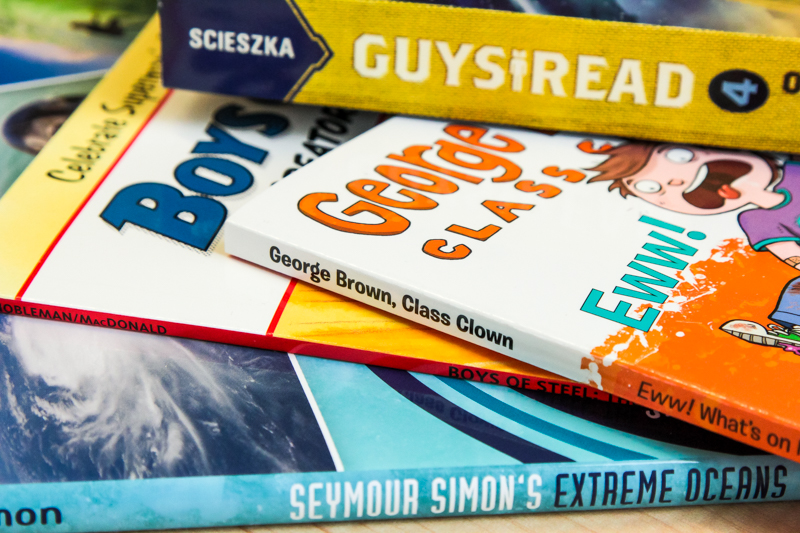



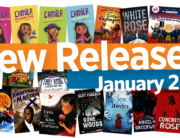
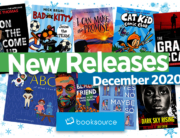
Leave A Comment